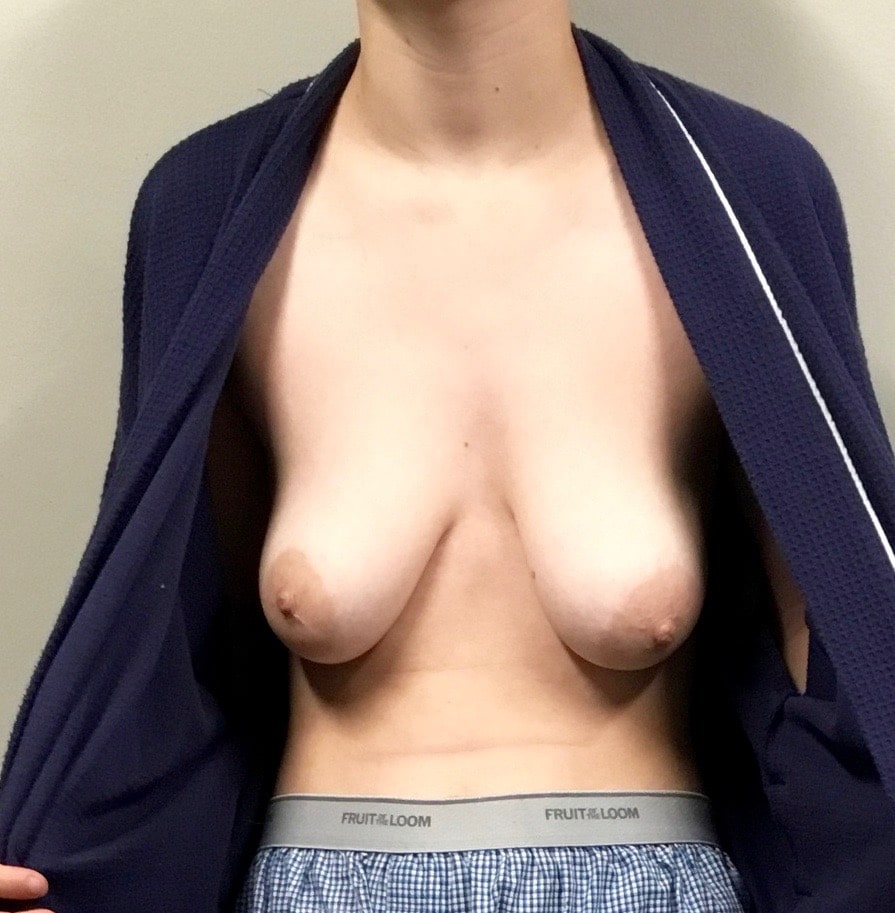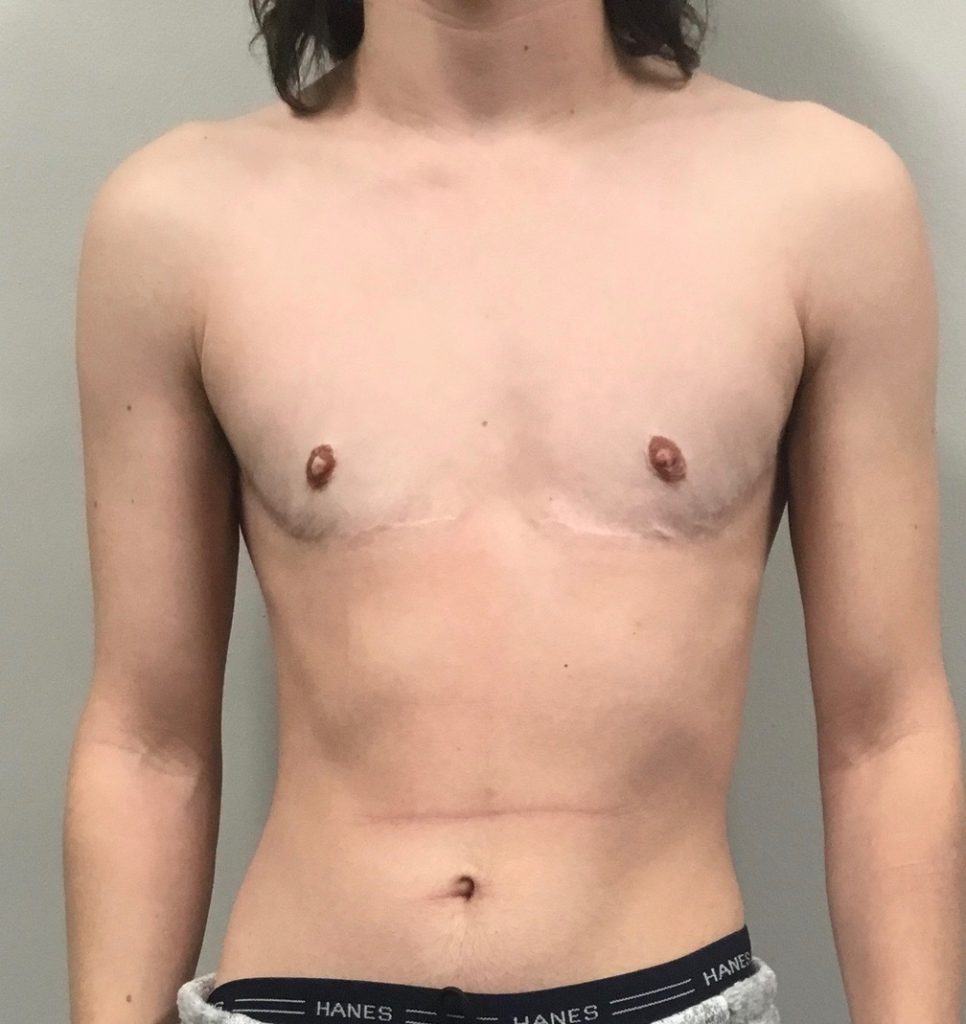

This pleasant 23 year old trans man came to see Dr. Medalie in regards to FtM “top surgery”. He had too much tissue for the peri-areolar approach and was scheduled for a double incision mastectomy with free nipple grafting and chest contouring by limited liposuction. His gender confirming surgery was performed as an outpatient and took approximately 90 minutes to perform. In his after picture he is shown 1 year post DI and is very pleased with his contour. *Results may vary
Below I have attached some information from my main web page that discussed the surgical options for top surgery. Here is a link to that page:
Top Surgery for Transgender Patients
The procedure is based on the following:
- Size and shape of breast
- Elasticity of skin
- Patient’s needs and preferences
PERI: In general, patients who have smaller breasts can have the entire surgery performed by having a small incision at the outer edge of the areola from 12:00 to 6:00 o’clock. A lighted retractor and surgical scissors are used to perform a complete sub-cutaneous mastectomy. Liposuction of the chest is also performed as needed.This provides the most optimal results and can be almost invisible after it heals. If the skin appears a little looser at the start of the case then a complete peri-areolar incision is made. A small amount of skin is removed (in a doughnut pattern , also known as-“peri-areolar or “purse-string” mastopexy”). A subcutaneous mastectomy is performed and then the outer edge of the skin is closed with a purse-string to the newly down-sized areola. By necessity, the edges of the incision around the nipple will be “scalloped” or bunched up initially. This settles down to a great degree over time. If the patient understands that scar revision may be necessary, this is a very reasonable approach. The nipple may experience compromise of its blood supply and also have sensation or erectile capacity changes.
Double Incision: In those patients with a large amount of breast tissue with excessive skin of poor quality and droop, it is usually recommend to remove the excess skin and breast tissue in the crease of the pectoralis muscles (elliptical or double incision mastectomy) and put the nipples and areolae back on as grafts. This surgery has the advantage of immediate and predictable results. I can contour the skin flaps and place the nipples where I want to. It has the disadvantage of permanently altering the sensation and erectile capacity of the nipples (and sometimes the pigmentation), and it leaves larger scars on the chest. Over time they fade and flatten out. At each end of the scar, “dog-ears” may form. These are small bunches of tissue created by the closing of the ellipse as a straight line. They tend to settle down over time, but may need to be revised. I always try and address the dog ears at the time of surgery but this may extend the length of the scar. Dog ears are more likely in patients who are heavier and have more tissue to start with. I always perform liposuction of the central and lateral chest (to flatten the dog ears) as well as the area in front of the armpit. I have been asked why a scar may meet in the center of the chest on some top surgery results but not on others. This is dependent on pre-existing anatomy. If the tissue meets in the middle (such as in the example right below) then the scar by necessity will meet in the middle (this can’t be seen in the example because of the patient’s chest hair.)
